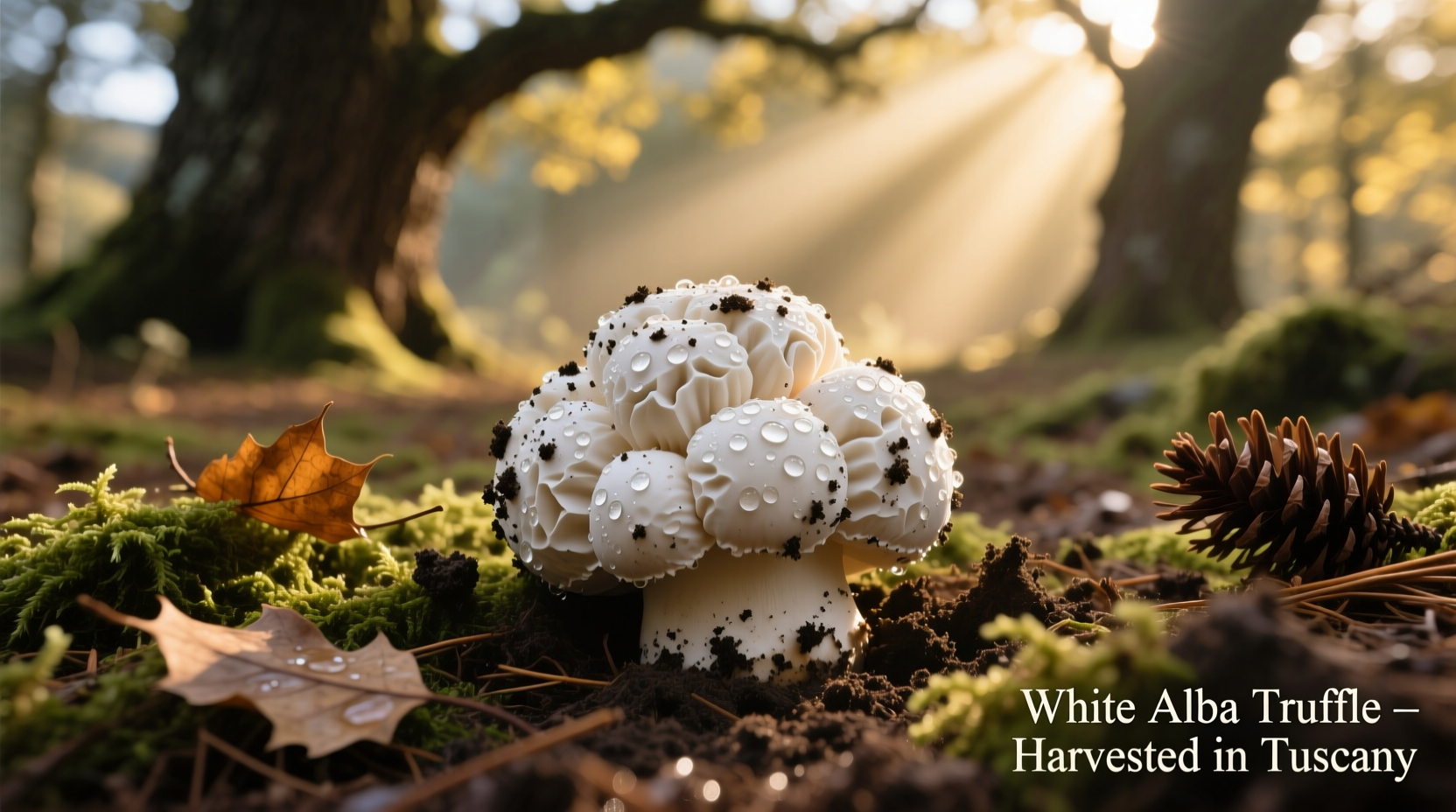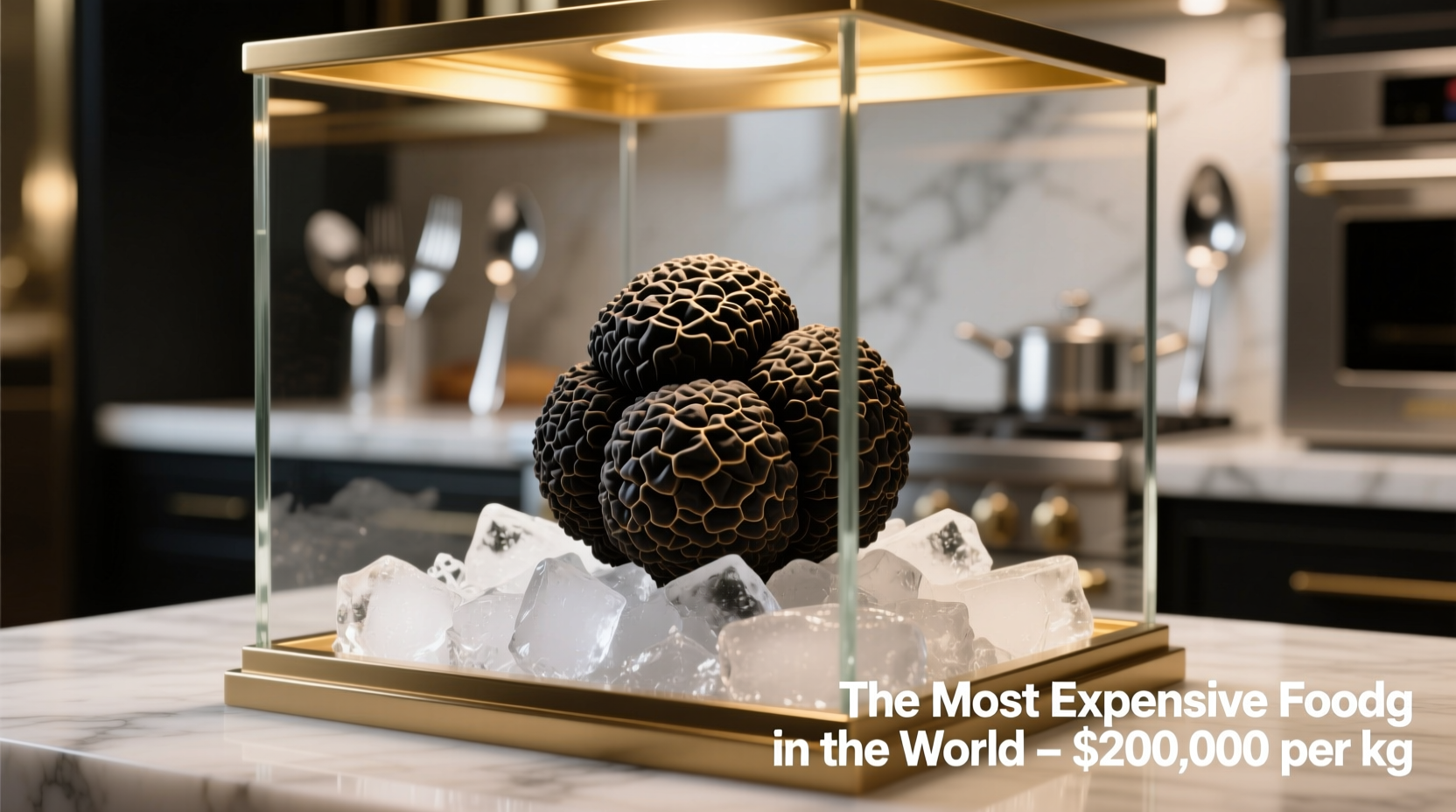Discover what makes white Alba truffles the undisputed champion of luxury foods and why gourmands worldwide consider them worth their extraordinary price tag. This definitive guide reveals the complete story behind these culinary treasures, including their seasonal availability, harvesting methods, and how they compare to other luxury foods.
Why White Alba Truffles Command Such Extraordinary Prices
Several factors converge to create the perfect storm of scarcity that drives white Alba truffle prices to astronomical levels. Unlike cultivated foods, these elusive fungi cannot be farmed commercially—they grow wild only in specific regions of northern Italy, primarily around the town of Alba in Piedmont. The narrow harvest season (October through December) creates intense time pressure for hunters and buyers alike.
The complex biological relationship between truffles and their host trees makes cultivation nearly impossible. According to research from the Slow Food Foundation, white truffles form symbiotic relationships with tree roots that scientists have yet to replicate in controlled environments. This natural limitation ensures permanent scarcity.
The Delicate Art of Truffle Hunting: A Centuries-Old Tradition
White truffle hunting follows a precise seasonal rhythm that hasn't changed significantly in centuries:
- Early October: First rains trigger truffle growth; hunters begin scouting forests
- Mid-October to November: Peak harvesting period with optimal aroma development
- December: Final harvest window before cold temperatures halt growth
- January: Season officially ends; hunters maintain relationships with landowners for next year
Modern hunters use specially trained dogs (never pigs, which damage the truffles) to locate these hidden treasures. The International Truffle Association reports that a single experienced truffle dog can detect fungi buried up to 30 centimeters underground, making them indispensable partners in the hunt.

How White Alba Truffles Compare to Other Luxury Foods
| Luxury Food | Price per Pound | Origin | Key Distinction |
|---|---|---|---|
| White Alba Truffle | $200,000-$330,000 | Piedmont, Italy | Wild-harvested, cannot be cultivated |
| Saffron | $4,500-$5,000 | Kashmir, Iran, Spain | Most expensive spice by weight |
| Almas Caviar | $15,000-$20,000 | Caspian Sea | Rare albino beluga sturgeon eggs |
| Pule Cheese | $900-$1,000 | Serbia | Produced from Balkan donkey milk |
| Bird's Nest Soup | $1,800-$9,000 | Southeast Asia | Edible nests from swiftlet birds |
Practical Guide: Experiencing White Alba Truffles Without Breaking the Bank
While purchasing whole truffles remains prohibitively expensive for most, several accessible options exist for experiencing their distinctive flavor:
- Truffle-infused products: High-quality olive oils and butters capture the essence at more affordable prices
- Seasonal restaurant specials: Many Michelin-starred restaurants offer truffle-focused menus during harvest season
- Truffle shaving experiences: Some Italian restaurants offer single-shaving portions for $50-$100
- Truffle festivals: The Alba International White Truffle Fair (October-November) offers tasting opportunities
When purchasing truffle products, look for clear origin labeling and harvest dates. The Alba Truffle Consortium certifies authentic products with a distinctive seal that verifies origin and quality.
Understanding the Ethical and Environmental Context
The white truffle industry faces significant sustainability challenges that affect both price and availability. Climate change has disrupted traditional rainfall patterns in Piedmont, directly impacting truffle yields. According to a 2023 study published in Environmental Microbiology, warmer temperatures have reduced annual harvests by approximately 30% over the past decade.
Responsible consumption requires understanding these limitations:
- Truffle hunting occurs only during designated seasons to protect ecosystems
- Reputable hunters follow strict guidelines to preserve host trees and surrounding habitat
- Many truffle forests operate under protected status through Slow Food's Ark of Taste program
- Counterfeit truffles (often Chinese varieties) flood markets during off-seasons
Debunking Common Misconceptions About Luxury Foods
Several myths persist about the world's most expensive foods that deserve clarification:
- Myth: Black truffles are more valuable than white truffles
- Reality: White Alba truffles command significantly higher prices due to their rarity and more complex aroma profile
- Myth: All expensive foods are artificially inflated by marketing
- Reality: White truffles' price reflects genuine biological scarcity and labor-intensive harvesting methods
- Myth: You can easily cultivate white truffles at home
- Reality: Despite decades of research, commercial cultivation remains impossible due to complex symbiotic requirements
How to Properly Enjoy White Alba Truffles
Maximizing the value of white truffle experiences requires understanding their delicate nature:
- Consume within 5 days of harvest for optimal aroma and flavor
- Never cook truffles directly—always shave raw over finished dishes
- Pair with simple preparations like fresh egg pasta or risotto
- Store in a sealed container with uncooked rice to absorb excess moisture
- Avoid strong spices that would overpower their subtle aroma
Professional chefs emphasize that less is more with white truffles. A few delicate shavings provide maximum impact without wasting this precious ingredient. The distinctive aroma—often described as a complex blend of garlic, honey, and earth—diminishes rapidly when exposed to heat.
Frequently Asked Questions
Why can't white Alba truffles be cultivated like other foods?
White Alba truffles form a complex symbiotic relationship with specific tree roots that scientists have been unable to replicate. Unlike black truffles which can be cultivated, white truffles require precise environmental conditions including specific soil composition, rainfall patterns, and tree species that exist only in limited regions of northern Italy.
How can I verify if I'm getting authentic white Alba truffles?
Authentic white Alba truffles should come with certification from the Alba Truffle Consortium showing harvest date and location. They have a distinctive knobby appearance with yellowish-tan skin and marbled white interior. Most importantly, they emit a powerful, complex aroma described as garlicky with notes of honey and earth. Be wary of products significantly cheaper than market rates, as Chinese truffles are often substituted.
What makes white truffles more expensive than black truffles?
White Alba truffles are significantly rarer than black truffles, with a much shorter harvesting season (only 3 months versus 6-8 months for black truffles). They cannot be cultivated, while many black truffle varieties can be farmed. White truffles also have a more complex, delicate aroma that many gourmet chefs consider superior, creating higher demand among discerning customers.
Are white Alba truffles worth their extraordinary price?
For culinary enthusiasts, white Alba truffles offer a unique sensory experience that many consider worth the investment. Their complex aroma and flavor profile cannot be replicated by any other ingredient. While the price seems extraordinary, the amount needed for a memorable dish is minimal—a few delicate shavings over simple pasta creates an unforgettable experience. Many consider it a worthwhile splurge for special occasions, similar to fine wine or champagne.











 浙公网安备
33010002000092号
浙公网安备
33010002000092号 浙B2-20120091-4
浙B2-20120091-4